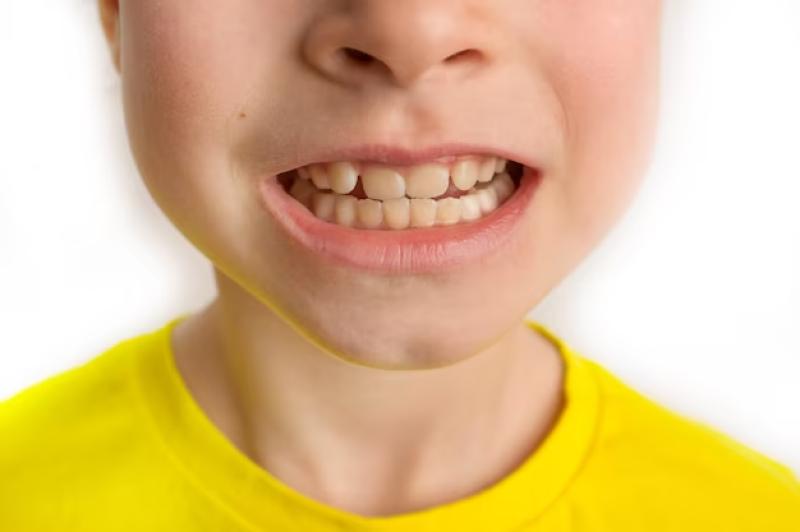Why is Malocclusion a Common Dental Condition?

Malocclusion is a dental condition where the teeth do not align properly when the jaws are closed. It is a common dental problem in orthodontics, in particular, as it affects millions of people worldwide. If left untreated, malocclusion can cause various issues. Learn why malocclusion is such a pervasive orthodontic issue and what can be done about it here.
Understanding Malocclusion
Malocclusion refers to an abnormal alignment of the teeth or a misalignment of the jaws that causes the teeth not to fit together properly. It then begs the question: what exactly causes malocclusion? Regarding malocclusion, it can stem from various factors. The following are the most common causes behind malocclusion:
- Genetics: Some people's genetics can cause the jaw to be too small or too large, leading to improper tooth alignment that causes malocclusion. Also, those born with a cleft lip and palate can have this dental condition since it affects the formation of the upper lip and roof of the mouth.
- Childhood habits: Another cause of malocclusion is childhood habits, such as thumb sucking, prolonged pacifier use, and tongue thrusting, which can cause misalignment of the teeth.
- Facial injuries: Facial injuries caused by direct impacts, fractures, soft tissue damage, nerve damage, or previous dental work can lead to malocclusion.
- Certain medical conditions: You'd be surprised by how many medical conditions can cause malocclusion. These include certain medical issues such as temporomandibular joint disorder (TMD), bruxism, sleep apnea, and even osteoporosis.
Types of Malocclusion
There are several types of malocclusion, each with its unique symptoms and causes. The most common types of malocclusion include the following:
- Overbite: An overbite is where the upper front teeth overlap the lower front teeth vertically, causing the upper front teeth to protrude beyond the lower front teeth.
- Underbite: An underbite refers to a dental condition where the lower front teeth protrude beyond the upper front teeth, resulting in the lower jaw looking more prominent than the upper jaw.
- Crossbite: A crossbite is a type of malocclusion where the upper and lower teeth do not fit together properly when biting down. Specifically, a crossbite occurs when one or more of the upper teeth sits behind the corresponding lower teeth when the jaw is closed.
- Open bite: An open bite is where there is a gap or space between the upper and lower front teeth when the jaw is closed. You can identify an open bite when the upper and lower teeth do not contact each other when biting down.
What Orthodontics Can Do For a Malocclusion
Orthodontics is the branch of dentistry that specializes in diagnosing, preventing, and treating malocclusion. Without orthodontic treatment, malocclusion can significantly impact your dental health. Misaligned teeth can make cleaning them difficult, leading to tooth decay and gum disease. Malocclusion can also cause jaw pain, headaches, and difficulty chewing. In severe cases, malocclusion can affect the appearance of the face, causing low self-esteem and self-confidence issues.
However, various orthodontic treatments can address malocclusion!
Commonly available treatments options are the following:
- Braces: Braces are the most common form of orthodontic treatment and involve attaching brackets and wires to the teeth. It applies gentle, constant pressure to the teeth over time, gradually moving them into the correct position. Treatment times vary depending on the severity of the malocclusion, but most patients wear braces for 1-3 years.
- Clear aligners: Clear aligners are a newer form of orthodontic treatment. They use a series of clear, custom-made trays that gradually shift the teeth into the correct position over time. Treatment times vary depending on the severity of the malocclusion, but most patients wear clear aligners for 6-18 months.
- Retainers: Retainers are orthodontic appliances that can help maintain the teeth' position and prevent relapse after braces or clear aligner treatment. Treatment times vary depending on the individual patient and their specific needs.
How to Prevent Malocclusion
While some cases of malocclusion cannot be prevented, several steps can be taken to reduce the risk of developing malocclusion.
- Practice good oral hygiene: Proper brushing and flossing can help to prevent tooth decay and gum disease, which can contribute to a malocclusion.
- Avoid habits that can damage teeth: If you're a parent, you will want to do your best to help wean off childhood habits such as thumb sucking, prolonged pacifier use, tongue thrusting, and other oral habits. By preventing these, you can reduce the chances of misaligning the teeth and jaws.
- Protect teeth from injury: Wearing a mouthguard during sports or other high-impact activities can help to prevent dental injuries that can cause malocclusion.
- Eat a healthy diet: A diet rich in calcium and other essential nutrients can help to promote healthy tooth and jaw development.
- Seek early treatment: Early detection and treatment of malocclusion can help to prevent more serious problems from developing later on.
- Regular dental check-ups: Regular dental check-ups can help to detect and treat malocclusion early on.
While these measures cannot guarantee that malocclusion will be completely prevented, they can help to reduce the risk of developing this condition and promote overall oral health. That's why it's best to try and seek orthodontic treatment early if a malocclusion is identified.
Malocclusion is a common dental condition that can significantly impact dental health and overall well-being. Understanding the causes and types of malocclusion and what orthodontic treatments are available can help individuals make informed decisions about their dental health. Individuals can improve their dental health and quality of life by taking steps to prevent malocclusion and seeking early treatment when necessary.
More to Read:
Previous Posts:





